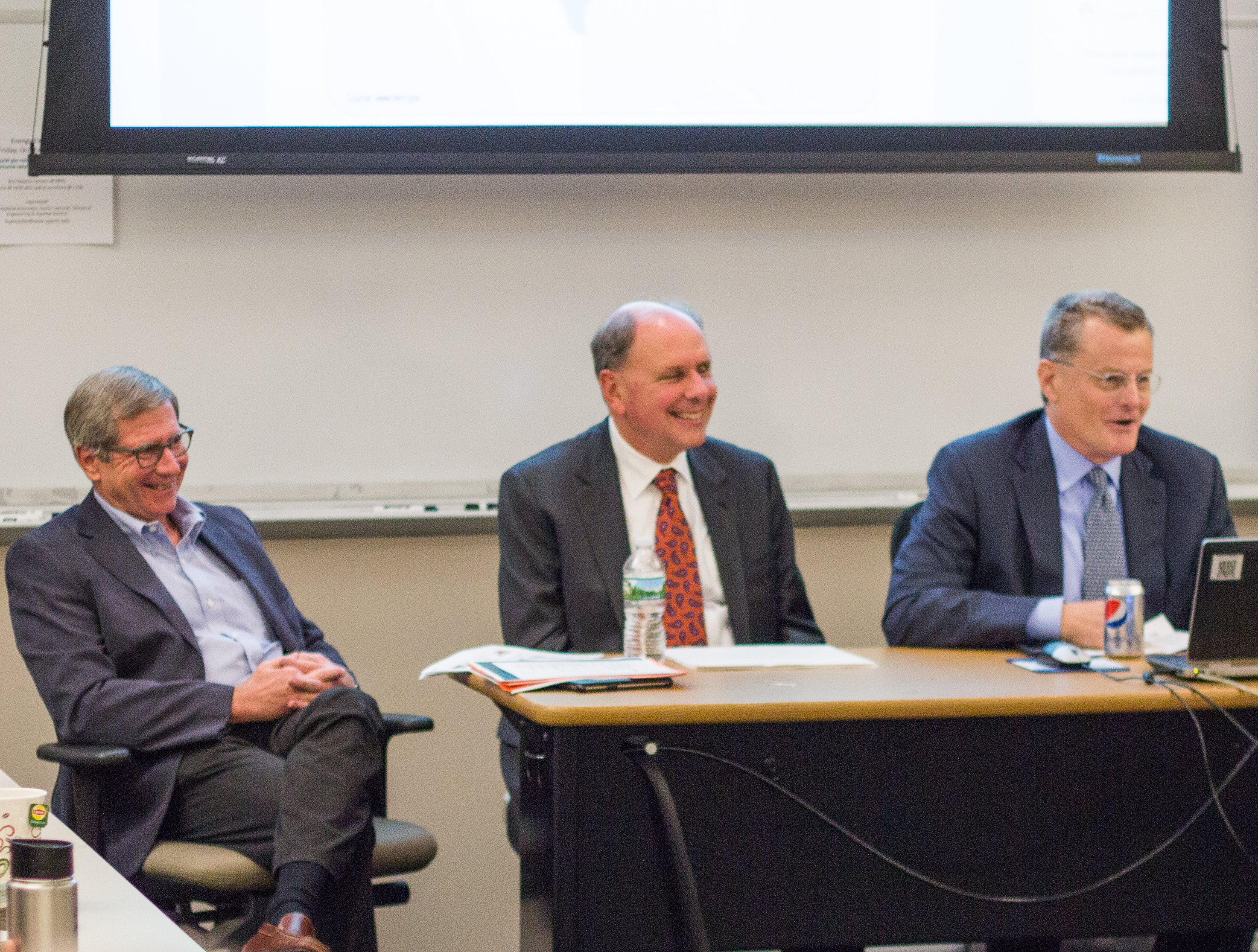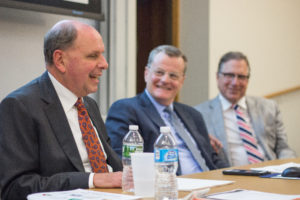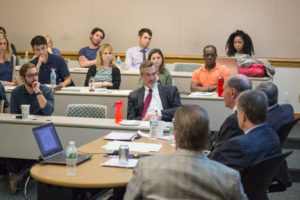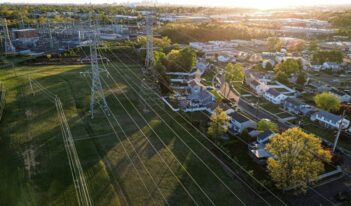
Penn Program on Regulation hosts a conversation with electricity market leaders.
Speaking at the height of the Great Depression, when electricity was still a rarity in many American homes, President Franklin D. Roosevelt declared that “electricity is no longer a luxury. It is a definite necessity.”
That statement could not ring any more true today. Yet, despite electricity’s vital role in the lives of all Americans, managing the delivery of electricity at low prices increasingly comes into conflict with other policy goals and changing market conditions.
To address these challenges, electricity market leaders recently spoke at a seminar organized by the Penn Program on Regulation and held at the University of Pennsylvania Law School.
Introducing the history of the electricity industry, Stephen G. Kozey, the Senior Vice President and Secretary of the Midcontinent Independent System Operator, which coordinates and monitors electricity transmission in the Midwest, posed the question of why a government should regulate electricity in the first place. Noting that electricity distribution is a natural monopoly a market in which all demand can be satisfied at the lowest cost by one seller– he offered four potential answers: to assure service availability; to assure just and reasonable prices; to respond to a market failure; and to respond to the unique features of a commodity or service. However, he noted that one factor unites these potential justifications for regulation–the belief that regulating a monopoly can produce benefits for the public good.
Bill Magness, the President and Chief Executive Officer of the Electric Reliability Council of Texas, which operates the state’s electric grid, noted that the current map of electricity transmission in the United States reflects historical boundaries that still influence business today. For example, although the U.S. Federal Energy Regulatory Commission (FERC) regulates the interstate transmission and sale of electricity in the United States, Texas remains nearly independent from the rest of the grid because the state historically severed its interstate connections to avoid federal regulation in the 1930s.
 Connecting the historical regulation of the electricity industry to modern regulation, Magness noted that the industry continues to confront new regulatory challenges. In particular, he remarked that many states have restructured electricity rules so that competitive sellers can enter electricity distribution markets and displace existing monopolies.
Connecting the historical regulation of the electricity industry to modern regulation, Magness noted that the industry continues to confront new regulatory challenges. In particular, he remarked that many states have restructured electricity rules so that competitive sellers can enter electricity distribution markets and displace existing monopolies.
Raymond W. Hepper, Vice President and General Counsel of ISO New England, considered whether current regulations and market structures can address other critical issues currently of concern to the public: specifically, climate change and the drive to replace fossil fuels with cleaner sources of energy.
Hepper noted that industry experts have proposed several market solutions to these environmental issues, such as putting a price on carbon pollution, encouraging producers of clean energy to participate in competitive electricity auctions, and changing the rules that govern how much electricity producers are paid in auctions for electricity generation.
However, Hepper noted that what individual states can do to address these environmental concerns remains unclear in the aftermath of two recent U.S. Supreme Court decisions: Hughes v. Talen Energy Marketing and FERC v. Electric Power Supply Association. In both of these cases, the Court reaffirmed FERC’s primacy in the wholesale electricity market, but declined to address the specific measures that states can take to advance their renewable energy goals without encroaching on FERC’s authority.
 Looking ahead to the future of the industry, Edward H. Comer, Vice President and General Counsel of Edison Electric Institute, an industry association that represents U.S. investor-owned electric companies, predicted that the next major upheaval in the industry will be in response to so-called self-generation technology. Comer noted that improvements in technology– such as solar panels–that allow individual users to generate their own electricity have made it possible for some individual households and businesses to start in their way to compete with traditional utility companies. These technological advances, in turn, have created important technical challenges for the management of the overall electrical grid.
Looking ahead to the future of the industry, Edward H. Comer, Vice President and General Counsel of Edison Electric Institute, an industry association that represents U.S. investor-owned electric companies, predicted that the next major upheaval in the industry will be in response to so-called self-generation technology. Comer noted that improvements in technology– such as solar panels–that allow individual users to generate their own electricity have made it possible for some individual households and businesses to start in their way to compete with traditional utility companies. These technological advances, in turn, have created important technical challenges for the management of the overall electrical grid.
In light of these technological advancements, Comer further observed that the electricity industry is wrestling with laws written under a very different technological framework. However, he noted that ultimately, the law will likely have “to follow the technology.”
The panel discussion was part of Penn Law’s Regulatory Law and Policy seminar organized by Professor Cary Coglianese, who moderated the event.



